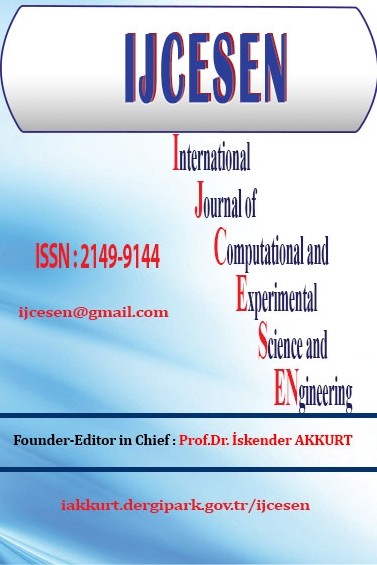Research and application of DCA microspheres as deep profile control agent in low permeability reservoir
Research and application of DCA microspheres as deep profile control agent in low permeability reservoir
microspheres, low permeability,
___
- [1] Kudaykulov A, Zhumadillayeva A (2015) Numerical simulation of temperature distribution field in beam bulk in the simultaneous presence of heat insulation, heat flux and heat exchange (ICCESEN 2015), 14–19 October, Antalya-Turkey. https://doi.org/10.12693/APhysPolA.130.335 [2] Koru M, Serçe O (2014) Experimental and numerical determination of casting-mold interfacial heat transfer coefficient in the high pressure die casting of A-360 Aluminum. International Conference on Computational and Experimental Science and Engineering (ICCESEN 2014), Antalya-Turkey. https://doi.org/10.12693/APhysPolA.130.453[3] Er Z (2015) A study of evaluation of solar energy simulation and modeling systems (ICCESEN 2015), 4–19 October, Antalya-Turkey. https://doi.org/10.12693/APhysPolA.130.72[4] Liu J, Fan H, Zhu L, Tian D, Wen Z, Liu Y, Wang G (2017) Development of a transient method on predicting multi-annuli temperature of subsea wells. J Pet Sci Eng 157, 295–301[5] I. Akkurt, A. Elkhayat, The effect of barite proportion on neutron and gamma-ray shielding, Annals of Nuclear Energy 51 (2013) 5-9. DOI:10.1016/j.anucene.2012.08.026[6] I. Akkurt, Proc. International Conference on Computational and Experimental Science and Engineering (ICCESEN 2014), 24-29 October, 2014 Antalya-Turkey
- Koru M, Serçe O (2014) Experimental and numerical determination of casting-mold interfacial heat transfer coefficient in the high pressure die casting of A-360 Aluminum. International Conference on Computational and Experimental Science and Engineering (ICCESEN 2014), Antalya-Turkey
- A study of evaluation of solar energy simulation and modeling systems
- Liu J, Fan H, Zhu L, Tian D, Wen Z, Liu Y, Wang G (2017) Development of a transient method on predicting multi-annuli temperature of subsea wells. J Pet Sci Eng 157, 295–301
- I. Akkurt, A. Elkhayat, The effect of barite proportion on neutron and gamma-ray shielding, Annals of Nuclear Energy 51 (2013) 5-9.
- I. Akkurt, Proc. International Conference on Computational and Experimental Science and Engineering (ICCESEN 2014), 24-29 October, 2014 Antalya-Turkey
- Yayın Aralığı: 4
- Başlangıç: 2015
- Yayıncı: Prof.Dr. İskender Akkurt
Determination of the Radiation Dose Level in Different Slice Computerized Tomography
Osman GÜNAY, Özcan GÜNDOĞDU, Mustafa DEMİR, Mohammad ABUQBEİTAH, Doğan YAŞAR, Serpil AKÖZCAN, Enis KAPDAN, Onur YARAR
Recycling and Characterization of Metallic Chips Using Powder Metallurgy
Handan DEMİREL, Aydın GÜNEŞ, Ömer Sinan ŞAHİN
The Effect of Exhaust Temperature on Urea-Water Decomposition in Marine SCR Systems
Kubilay BAYRAMOĞLU, Güner ÖZMEN, A. Güldem CERİT
Vibration Behavior of Composite Materials Produced by Waste Metal Recycling
Aydın GÜNEŞ, Erdi GÜLBAHÇE, Emin SALUR, Abdullah ASLAN, Ömer Sinan ŞAHİN
Yonca Yahşi ÇELEN, Hazım Orhan KIZILKAYA
Yonca YAHŞİ ÇELEN, Hazım Orhan KIZILKAYA
Comparing the Effect of Process Fluid for Wet Ground Heat Exchanger
Xuedong SHİ, Xiang’an YUE, Mingda DONG, Changchun YANG
Optimization of Air Distribution in A Non-Ducted Concealed Type Fancoil Unit Heat Exchanger
Murat OZSOY, Canberk YUCEL, Onur VARLICA, Serhan KILIÇ, Kagan KAPLAN
